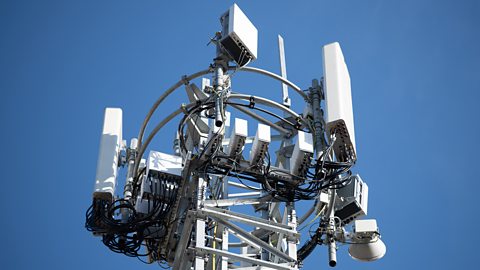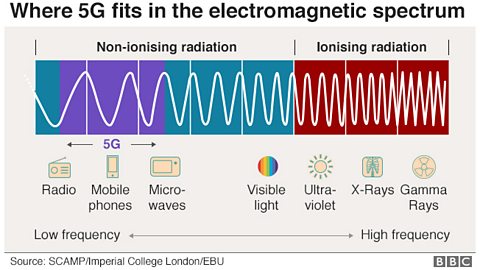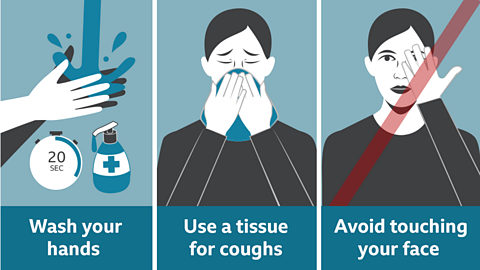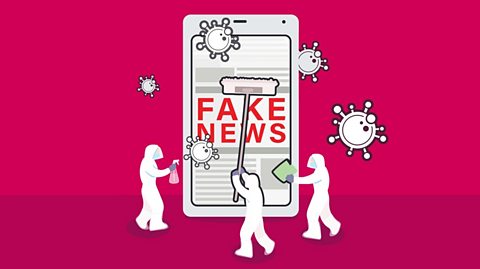Fake news around the dangers of 5G technology and its links to coronavirus have spread online and on social media, despite the lack of any scientific evidence.
Public Health England have said “there should be no consequences for public health” with the addition of 5G networks, and independent fact-checking charity Full Fact concluded “there is no evidence that 5G WiFi networks are linked to the new coronavirus.”
So why do so many people continue to spread fake stories about 5G, and what is it about these stories that’s fake?

How the fake news has spread
You’ve probably heard of 5G, the superfast internet technology that recently arrived in the UK. It promises quicker downloads and browsing speeds with the latest wave of smartphones being able to connect to 5G networks.
It’s also very likely you’ve come across some fake news incorrectly linking 5G to the spread of coronavirus. TikTok videos from accounts with huge followings have received tens of thousands of views and a number of high-profile celebrities have been sharing conspiracy theories about 5G on Instagram and Twitter.

Social media companies have begun to take some action to stop these claims from spreading. YouTube is taking down any videos that promote false stories linking 5G to the spread of coronavirus, while WhatsApp are limiting how many times a popular forwarded message can be forwarded on further.
But even with these actions, the conspiracy theories have spilled over from the online world and into the real one. Reports of fires at masts (that carry 5G signals) across the UK and other acts of vandalism show the real-world consequences of taking false stories as true ones.

Why is it fake news?
Concerns about 5G technology have been around since before the coronavirus outbreak. 5G uses radio waves to transmit mobile data over its networks, just like with 4G and 3G. It uses a frequency at the lower end of the electromagnetic spectrum, which means the waves are not strong enough to damage human cells.
Frequencies at the higher end of the spectrum can be harmful to humans, such as x-rays or ultra-violet light. However, 5G is well below this level, with measurements showing it is 66 times below the safety limit for harmful radiation set by international guidelines.

False theories linking 5G to coronavirus usually come in two varieties. They claim:
- 5G weakens the immune system, making us more vulnerable to catching the virus
- The virus can be transmitted through 5G networks
With the first theory, we’ve already seen how scientists believe 5G is not strong enough to harm our cells or have a negative effect on our immune system. There are plenty of things that can weaken our immune system, such as a poor diet or lack of sleep, but 5G is not one of them.

The second theory makes even less sense when we look at the facts. Coronavirus is a virus that is able to spread by passing from those infected with it to the rest of the population, from coughs, sneezes and close contact. The electromagnetic waves that help carry 5G are completely different to viruses, and there is no way they could spread a virus – it’s physically impossible!
Wuhan, the centre of the coronavirus epidemic in China, was one of the first places in the country to trial 5G technology, and some have incorrectly linked the two unrelated events. However, countries without 5G, such as Iran, have reported huge numbers of coronavirus cases. There are also a number of areas in the UK without 5G coverage that have cases of coronavirus, so this theory just doesn’t add up.

Make sure you get the facts straight.
Coronavirus is spreading but we can all play a part in trying to slow this down and protect ourselves and others. Don’t rely on rumour or gossip, go to a trusted source such as:
And follow the basic recommendations:

Stay at home as much as possible
Limit contact with other people
Keep your distance if you go out (2 metres apart where possible)
Wash your hands more often than usual, for 20 seconds – regularly & properly with soap and water or with hand sanitiser if water isn't available. Wash your hands whenever you get home or into work; whenever you blow your nose, sneeze or cough and before and after you eat or handle food
Catch it, bin it, kill it. Use a tissue rather than a hankie if you sneeze or cough and throw it in the bin
If you have a cough, fever or difficulty breathing seek advice over the telephone – do not go into your local surgery as you risk infecting others. Stay safe out there!
Where next?
The seven types of people who start and spread viral misinformation
Conspiracy theories and speculation about coronavirus have flooded social media. But who starts these rumours? And who spreads them?

Tips for spotting fake news online
Nihal Arthanayake looks at some simple steps which will help separate fact from fake.

Coronavirus: How can you stop the spread of misinformation?
A look at how we can all slow the spread of harmful coronavirus advice on social media.

Fact or Fake?
Find out how to spot and stop fake news with BBC Bitesize.
